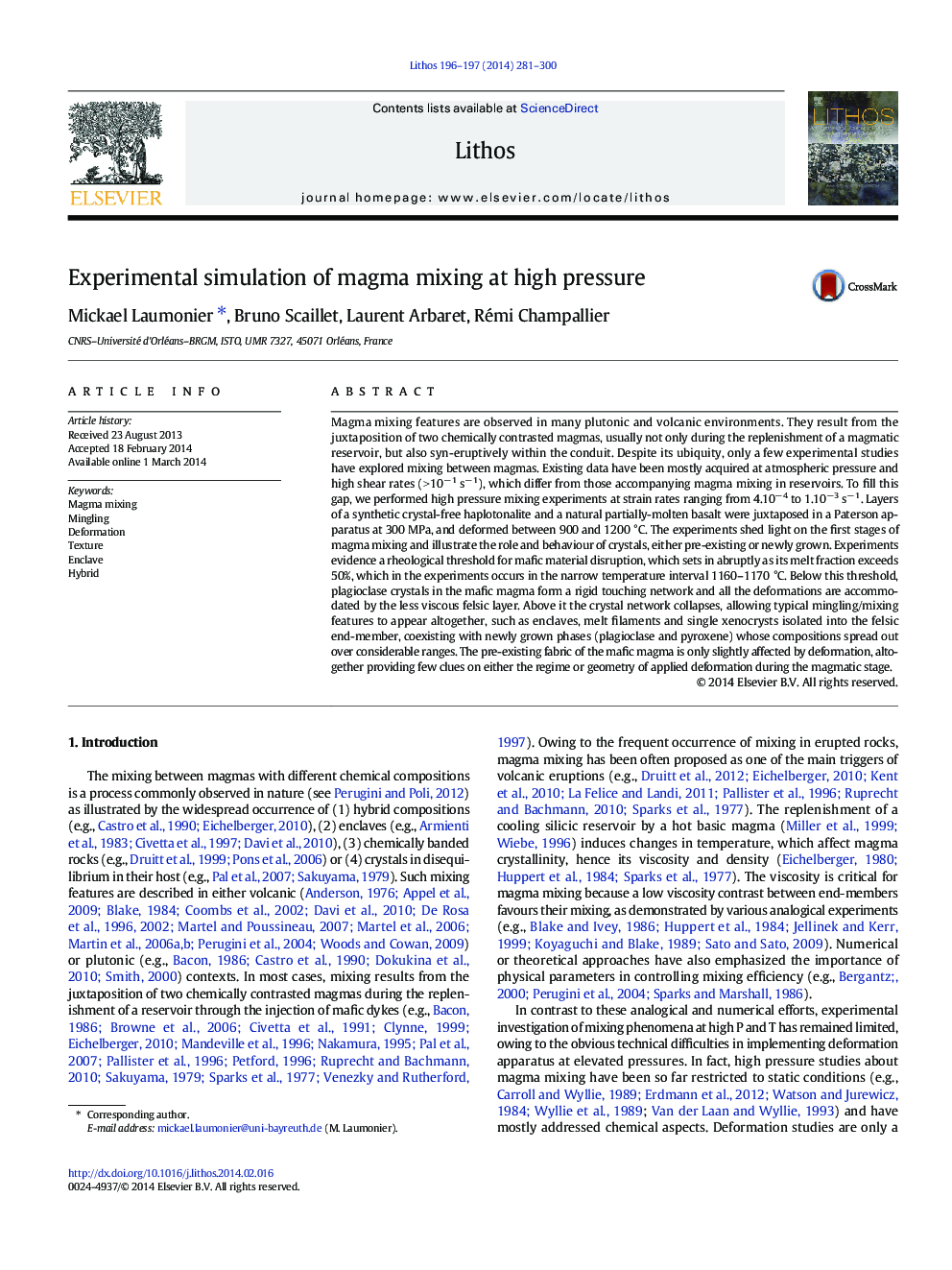| کد مقاله | کد نشریه | سال انتشار | مقاله انگلیسی | نسخه تمام متن |
|---|---|---|---|---|
| 4715987 | 1638678 | 2014 | 20 صفحه PDF | دانلود رایگان |
• We experimentally produced mixing & mingling features commonly encountered in nature.
• Crystal fraction (Φs) and resulting viscosity are parameters controlling magma mixing.
• Mixing and mingling occur when a crystal framework does not exists (Φs < ~ 0.5).
• Mixing features appear altogether and cannot be linked to strain or strain rate.
Magma mixing features are observed in many plutonic and volcanic environments. They result from the juxtaposition of two chemically contrasted magmas, usually not only during the replenishment of a magmatic reservoir, but also syn-eruptively within the conduit. Despite its ubiquity, only a few experimental studies have explored mixing between magmas. Existing data have been mostly acquired at atmospheric pressure and high shear rates (> 10−1 s−1), which differ from those accompanying magma mixing in reservoirs. To fill this gap, we performed high pressure mixing experiments at strain rates ranging from 4.10−4 to 1.10−3 s− 1. Layers of a synthetic crystal-free haplotonalite and a natural partially-molten basalt were juxtaposed in a Paterson apparatus at 300 MPa, and deformed between 900 and 1200 °C. The experiments shed light on the first stages of magma mixing and illustrate the role and behaviour of crystals, either pre-existing or newly grown. Experiments evidence a rheological threshold for mafic material disruption, which sets in abruptly as its melt fraction exceeds 50%, which in the experiments occurs in the narrow temperature interval 1160–1170 °C. Below this threshold, plagioclase crystals in the mafic magma form a rigid touching network and all the deformations are accommodated by the less viscous felsic layer. Above it the crystal network collapses, allowing typical mingling/mixing features to appear altogether, such as enclaves, melt filaments and single xenocrysts isolated into the felsic end-member, coexisting with newly grown phases (plagioclase and pyroxene) whose compositions spread out over considerable ranges. The pre-existing fabric of the mafic magma is only slightly affected by deformation, altogether providing few clues on either the regime or geometry of applied deformation during the magmatic stage.
Journal: Lithos - Volumes 196–197, May 2014, Pages 281–300
